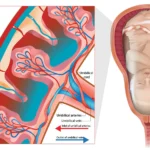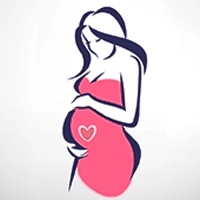IVF is a complex process of assisted conception in which eggs collected from ovaries are manually fertilized by sperm outside the woman’s body in a lab. Then the fertilized egg (or eggs) called the embryo (or embryos), is then inserted into the uterus. The embryo then implants itself to the uterine wall and develops. This process is used to help couples who are struggling to conceive.
One complete IVF cycle takes three weeks, but may take longer in some cases, if the procedure is split into separate steps. IVF is considered as the most effective medical treatment for conceiving. If you are planning to get IVF treatment, you should learn from your doctor if this is the suitable treatment for you, how it works and what are the risks associated with this.
Side effects of IVF treatment
Medicine risks
Injectable fertility drugs are used to stimulate the growth of eggs in women. The injected area may get bruised or feel sore, if the same spot is used multiple times. It may cause skin irritation or reddening. Medications can result in nausea, mood sensitivity, increase in vaginal discharge, soreness of breasts, exhaustion and in rare cases a condition called Ovarian Hyper Stimulation Syndrome.
Egg retrieval risks
This process involves insertion of an aspirating needle into the ovaries through vagina to collect the eggs. During the procedure, some women may experience stomach and pelvic pain. Pain may also occur after the procedure and last a couple of days and can be dealt with regular medicines. Sometimes, organs close to the ovaries may get injured during the process. Blood vessel or bowel if injured, may need surgery in rare cases. Infections are generally rare, but in some cases require intravenous medicine and in severe cases surgery may be required. Women with previous pelvic or ovarian infections are more at risk of developing infections in IVF procedure. If anaesthesia is used, it may also cause some side effects.

Embryo transfer risks
A thin tube called urinary catheter consisting of embryo (embryos) that have been lab fertilized, is used for placing into the womb. Some women may experience mild cramps during the insertion process of catheter through cervix. Light vaginal spotting maybe accompanied after the procedure. In rare cases some women may develop infections, which are easily treatable.
Multiple Births
If more than one fertilized egg, (embryo) is placed into the uterus, there is a possibility of multiple births. This increases additional risk of preterm births and low birth weight in babies. Chances of C- section also increase with IVF treatment. Risk of multiples is usually ignored in many cases.
Stress
The entire procedure of IVF treatment can be overwhelming physically as well as emotionally. Also, the process treatment being expensive, can add to your worries. Get all the support from friends or those who have undergone the treatment successfully, to go through the highs and lows of IVF treatment.[/vc_column_text][vc_column_text]
You May Also Like:
[/vc_column_text][/vc_column][/vc_row]






